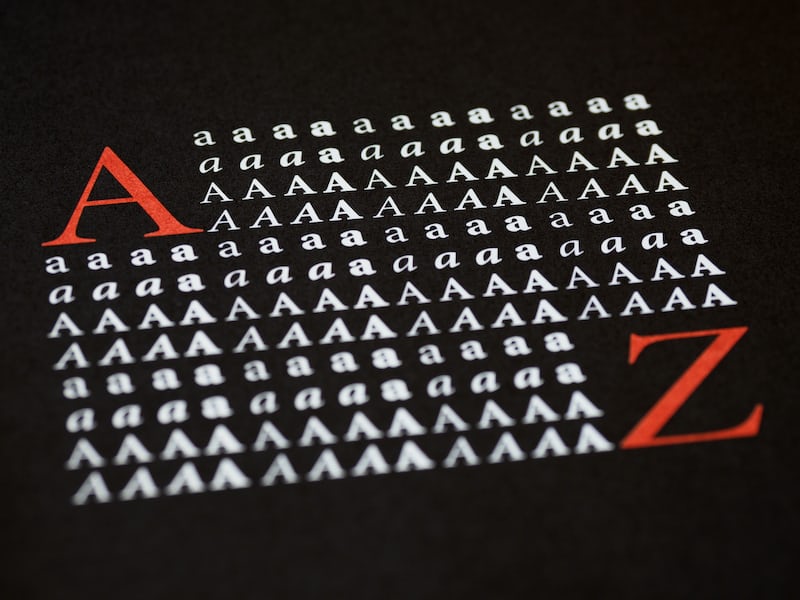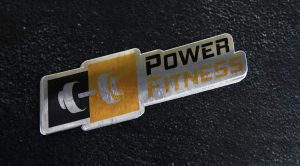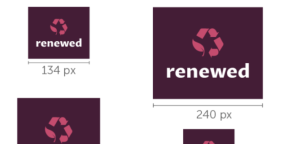Are you looking to create a modern and sophisticated logo design? Consider using modern serif fonts. Serif fonts have been used in typography for centuries, and they are still popular today. Serif fonts have small lines or flourishes at the ends of the strokes that make up each letter. These lines give the font a more traditional and classic look.
However, modern serif fonts have been updated to give them a more contemporary feel. They are sleek, elegant, and easy to read. Modern serif fonts are perfect for creating a logo design that is both timeless and modern. They can convey a sense of sophistication, trustworthiness, and professionalism. In this article, we will explore the best modern serif fonts for logo design and how to choose the right one for your brand.
Understanding Modern Serif Fonts
When it comes to logo design, choosing the right font is crucial. Serif fonts are known for their unique characters that make them stand out from other typefaces. However, not all serif fonts are created equal. Modern serif fonts, in particular, have become increasingly popular in recent years due to their ability to combine traditional elegance with a contemporary flair.
Modern serif fonts are characterized by their clean lines, minimalistic design, and simple yet elegant look. They are often used in logo design to convey a sense of sophistication and professionalism. These fonts are designed to be readable and easy on the eyes, making them a great choice for long passages of text.
One of the key benefits of using modern serif fonts in logo design is that they can help your brand stand out from the competition. They offer a unique look that is both timeless and modern. This can help your brand establish a strong identity and build trust with your audience.
When choosing a modern serif font for your logo, it’s important to consider factors such as readability, scalability, and versatility. You want a font that is easy to read at any size, whether it’s on a business card or a billboard. You also want a font that can be used in a variety of contexts and still look great.
Some popular modern serif fonts for logo design include Arapey, Larken, and Black Mango. Each of these fonts offers a unique look and feel that can help your brand stand out. Arapey, for example, features contemporary curves and accents that give it a modern feel, while Larken is a smooth and expressive serif that is versatile and scalable.
In conclusion, modern serif fonts are a great choice for logo design because they offer a unique look that is both timeless and modern. When choosing a modern serif font for your logo, consider factors such as readability, scalability, and versatility. With the right font, you can establish a strong brand identity and build trust with your audience.
Logo Design Basics
When it comes to creating a logo for your business, there are a few basic principles to keep in mind. Your logo is the face of your brand, and it’s important to get it right. Here are some logo design basics to consider:
Keep it Simple
Your logo should be simple and easy to recognize. Avoid using too many colors or complex designs. A simple logo is more versatile and easier to remember.
Make it Memorable
Your logo should be memorable and stand out from the competition. Use unique colors, shapes, and typography to create a logo that is instantly recognizable.
Consider Your Brand
Your logo should reflect your brand’s personality and values. Think about the message you want to convey and choose colors and typography that align with your brand’s identity.
Think about Form and Function
Your logo should look great on a variety of platforms, from business cards to billboards. Consider how your logo will look in different sizes and formats and choose a design that is versatile and scalable.
Hire a Professional
If you’re not confident in your design skills, consider hiring a professional logo designer. A professional designer can help you create a logo that is both visually appealing and effective at representing your brand.
By keeping these logo design basics in mind, you can create a logo that is both visually appealing and effective at representing your brand.
The Role of Typography in Logo Design
When it comes to logo design, typography plays a crucial role in communicating the brand’s identity and personality. Typography is the art and technique of arranging type to make written language legible, readable, and appealing when displayed. The right typography can evoke emotions and convey messages that resonate with the audience.
Choosing the right font is essential to creating a successful logo. A font that is too ornate or complex can make the logo difficult to read, while a font that is too plain or generic can make the logo forgettable. The font you choose should reflect the brand’s personality and values while being legible and easy to read.
The spacing, size, and weight of the font are also essential considerations in logo design. The spacing between letters and lines can affect the logo’s readability, while the font size and weight can impact its visual impact. It’s crucial to choose a font that is readable at different sizes and weights, as logos are often used in various contexts and media.
Readability and legibility are crucial factors to consider when choosing typography for logo design. Legibility refers to how easy it is to distinguish individual characters, while readability refers to how easy it is to read a block of text. The typography you choose should be legible and readable, even at small sizes or from a distance.
Finally, typography can also convey accessibility and inclusivity. Choosing a font that is easy to read for people with visual impairments or dyslexia can make your brand more accessible and inclusive. It’s essential to consider accessibility when designing a logo to ensure that it can be enjoyed by everyone.
In summary, typography plays a vital role in logo design, as it helps communicate the brand’s identity and personality. The right font can evoke emotions, convey messages, and make the logo memorable. When choosing typography for logo design, it’s crucial to consider readability, legibility, size, weight, spacing, and accessibility to create a successful and impactful logo.
Choosing the Right Font for Your Logo
When it comes to designing a logo, choosing the right font is crucial. The font you choose can convey the personality of your brand, make your logo memorable, and set you apart from your competitors. In this section, we’ll discuss some tips for choosing the right font for your logo.
Serif vs. Sans Serif Fonts
One of the first decisions you’ll need to make is whether to use a serif or sans-serif font for your logo. Serif fonts have small lines or flourishes at the end of each letter, while sans-serif fonts do not. Serif fonts are often associated with tradition, elegance, and sophistication, while sans-serif fonts are seen as modern, clean, and simple.
Both serif and sans-serif fonts can be used effectively in logo design, depending on the personality of your brand. If you want to convey a sense of history or tradition, a serif font may be the way to go. If you want to appear modern and cutting-edge, a sans-serif font may be a better choice.
Font Pairing
If you choose to use a serif font in your logo, you may want to pair it with a sans-serif font for additional contrast. Font pairing can add depth and interest to your logo design, but it’s important to choose fonts that complement each other. When pairing fonts, consider factors such as font size, weight, and style.
Best Serif Fonts for Logo Design
There are many great serif fonts that can be used effectively in logo design. Some of the best serif fonts for logos include:
- Garamond
- Baskerville
- Times New Roman
- Georgia
- Bodoni
- Didot
When choosing a serif font for your logo, consider the personality of your brand and the message you want to convey. Some serif fonts are more traditional and elegant, while others are more modern and edgy.
In conclusion, choosing the right font for your logo is an important decision that can have a big impact on the success of your brand. Consider factors such as serif vs. sans-serif, font pairing, and the personality of your brand when making your choice. With the right font, your logo can be memorable, recognizable, and effective in communicating your brand’s message.
Influence of Serif Fonts on Brand Perception
When it comes to logo design, the choice of font can significantly influence how a brand is perceived. Serif fonts, with their elegant and classic look, can convey a sense of sophistication and luxury that can elevate a brand’s image.
Serif fonts have been used for centuries, and their association with traditional printing and publishing can lend a brand a sense of history and heritage. This can be particularly effective for brands that want to convey a sense of reliability and trustworthiness.
In addition to their association with elegance and tradition, serif fonts can also be bold and attention-grabbing. This can be useful for brands that want to make a statement and stand out from the crowd.
However, it’s important to keep in mind that not all serif fonts are created equal. The choice of font should be based on the brand’s personality and values, as well as the message it wants to convey. A serif font that is too ornate or difficult to read can detract from the brand’s message and make it seem unapproachable.
Overall, serif fonts can be a powerful tool in logo design, conveying a sense of elegance, sophistication, and history. When used correctly, they can help a brand stand out and make a lasting impression on its audience.
Popular Modern Serif Fonts in Logo Design
https://www.youtube.com/watch?v=pJ0AA8_dFHs&embed=true
When it comes to logo design, choosing the right font is crucial. Serif fonts are a popular choice for their classic and elegant look. However, modern serif fonts have become increasingly popular in recent years for their unique and stylish appearance.
Here are some of the most popular modern serif fonts used in logo design:
Bodoni
Bodoni is a classic serif font that has been modernized with a contemporary twist. It features high contrast between thick and thin strokes, and its sharp serifs give it a modern feel. Bodoni is a popular choice for fashion and luxury brands due to its elegant and sophisticated look.
Garamond
Garamond is a timeless serif font that has been used for centuries. Its modern version features a refined and delicate appearance, with thin and curved serifs. Garamond is a versatile font that can be used for a variety of brands, from classic to modern.
Didot
Didot is a modern serif font that is characterized by its thin and elongated letterforms. Its high contrast between thick and thin strokes gives it a unique and stylish appearance. Didot is a popular choice for fashion and luxury brands due to its elegant and sophisticated look.
These modern serif fonts are perfect for creating logos that are both classic and stylish. Whether you are designing a logo for a fashion brand, a vintage shop, or a retro-inspired business, these fonts will help you achieve the desired look and feel.
The Impact of Font Weights and Styles
When it comes to logo design, the font weight and style can have a significant impact on the overall look and feel of the logo. Here are some important things to keep in mind when choosing the right font weight and style for your logo:
Font Weights
Font weight refers to the thickness or boldness of the characters in a font. Choosing the right font weight can help convey the right message to your audience. Here are some examples:
- Light Weight: This font weight is perfect for logos that want to convey a delicate or elegant feel. It is also commonly used for feminine brands.
- Regular Weight: This is the most common font weight and is perfect for logos that want to convey a neutral or professional feel.
- Bold Weight: This font weight is perfect for logos that want to convey a strong or powerful feel. It is also commonly used for masculine brands.
Font Styles
Font style refers to the slant or angle of the characters in a font. Here are some examples:
- Italic: This font style is perfect for logos that want to convey a casual or playful feel. It is also commonly used for creative brands.
- Bold: This font style is perfect for logos that want to convey a strong or powerful feel. It is also commonly used for masculine brands.
- Casual: This font style is perfect for logos that want to convey a relaxed or friendly feel. It is also commonly used for food and beverage brands.
- Feminine: This font style is perfect for logos that want to convey a delicate or elegant feel. It is also commonly used for fashion and beauty brands.
In conclusion, choosing the right font weight and style can have a significant impact on the overall look and feel of your logo. Make sure to choose a font that accurately represents your brand and conveys the right message to your audience.
Utilizing Serif Fonts in Different Design Elements
Serif fonts have been around for centuries and have been used in various design elements such as display, headline, titles, posters, invitations, magazines, and packaging. They are known for their elegance, sophistication, and timeless appeal.
When it comes to design, serif fonts can be used to create a sense of tradition, formality, and authority. They are perfect for conveying a message that requires a serious tone, such as legal documents or academic papers. Serif fonts can also be used to create a sense of luxury and exclusivity, making them ideal for high-end brands or products.
In display and headline design, serif fonts can be used to create a bold and impactful statement. They are perfect for grabbing the reader’s attention and conveying a message with authority. Serif fonts with thicker strokes and more pronounced serifs are particularly effective in this regard.
When it comes to titles and headings, serif fonts can be used to create a sense of elegance and sophistication. They are perfect for conveying a sense of importance and can be used in various design elements such as posters, invitations, and magazines.
Serif fonts can also be used in packaging design to create a sense of tradition and authenticity. They are perfect for conveying a message of quality and craftsmanship, making them ideal for products that are handmade or artisanal.
In summary, serif fonts can be utilized in various design elements to create a sense of tradition, formality, authority, luxury, exclusivity, elegance, sophistication, importance, and authenticity. When selecting a serif font, it is essential to consider the message you want to convey and the design element you are using it in. By doing so, you can create a design that is both impactful and effective.
Serif Fonts in Digital and Print Media
Serif fonts have been a popular choice in both digital and print media for many years. They are known for their elegant and classic look, making them a great option for businesses that want to convey a sense of professionalism and sophistication.
In the digital world, serif fonts are often used for websites and social media graphics. They can help to make text more readable, especially when used in longer paragraphs. Serif fonts also work well for headings and titles, as they can add a touch of elegance and sophistication to a design.
In print media, serif fonts are commonly used in magazines, newspapers, and books. They are a popular choice for body text, as they can make reading more comfortable and enjoyable. Serif fonts can also be used for headlines and titles, as they can help to grab the reader’s attention.
Serif fonts can also be used in business cards and packaging design. They can help to create a professional and polished look, making them a great choice for businesses that want to stand out from the competition.
When choosing a serif font for your design, it’s important to consider factors such as readability, legibility, and overall aesthetic. Some popular modern serif fonts include Bodoni, Caslon, and Century. These fonts are versatile and can work well in a variety of design contexts.
In summary, serif fonts are a timeless and versatile option for both digital and print media. They can help to create a professional and polished look, making them a great choice for businesses looking to convey a sense of sophistication and elegance.
Conclusion
In conclusion, serif fonts have been around for centuries and continue to be a popular choice for logo design. They convey a sense of tradition, elegance, and sophistication that can help elevate a brand’s image. However, modern serif fonts have also emerged as a popular trend in recent years, offering a fresh take on this classic typeface.
When choosing a modern serif font for your logo, consider the overall aesthetic you want to convey. Do you want something bold and attention-grabbing, or more understated and refined? Look for a font that complements your brand’s personality and values.
Some of the best modern serif fonts for logo design include Merriweather, Glatic, and Corsica. These fonts offer a balance of classic and contemporary design elements, making them a great choice for a wide range of brands.
Remember, the font you choose for your logo is just one aspect of your brand’s visual identity. It’s important to consider how your logo will be used across different mediums, such as print, digital, and social media. By taking a thoughtful and strategic approach to your logo design, you can create a memorable and impactful brand that resonates with your target audience.
Barry Edwards is a digital marketing expert with a deep understanding of content strategy, logo, and branding principles. Holding a Bachelor’s degree in Marketing from Beaconhill College, he offers valuable insights on digital marketing trends and strategies through his writing. Follow Barry’s work to stay updated on the latest in online marketing and branding.



